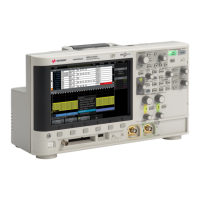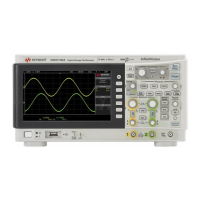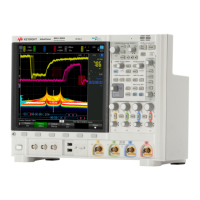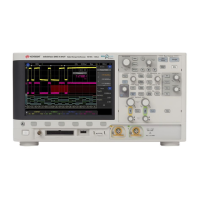91
Keysight InfiniiVision 4000 X-Series Oscilloscopes
Programmer's Guide
4 Sequential (Blocking) vs.
Overlapped Commands
IEEE 488.2 makes the distinction between sequential and overlapped commands
(and queries):
• Sequential commands also known as blocking commands, finish their task
before the execution of the next command starts.
These oscilloscope commands and queries are sequential (blocking):
• :AUToscale
• :DIGitize
• :WMEMory<r>:SAVE <source>
• :WAVeform:DATA?
• Overlapped commands run concurrently. Commands following an overlapped
command may be started before the overlapped command is completed.
Some oscilloscope commands are overlapped. For example, the oscilloscope's
save and recall commands are overlapped as well as some commands that
perform analysis.
With sequential (blocking) commands and queries, the oscilloscope is expected to
stop processing inputs, including additional remote commands and queries as
well as front panel knobs, until completed.
Pausing Execution
Between
Overlapped
Commands
With overlapped commands, you can use the *OPC? query to prevent any more
commands from being executed until the overlapped command is complete. This
may be necessary when a command that follows an overlapped command
interferes with the overlapped command's processing or analysis. For example:
:RECall:SETup "setup.scp";*OPC?;:RECall:ARBitrary "arb_wfm.csv"
You can also use the *ESR? query to look at the OPC bit (bit 0) in the Standard
Event Status Register to determine when an operation is complete.
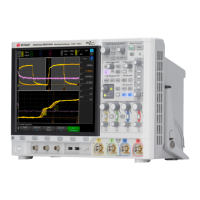
